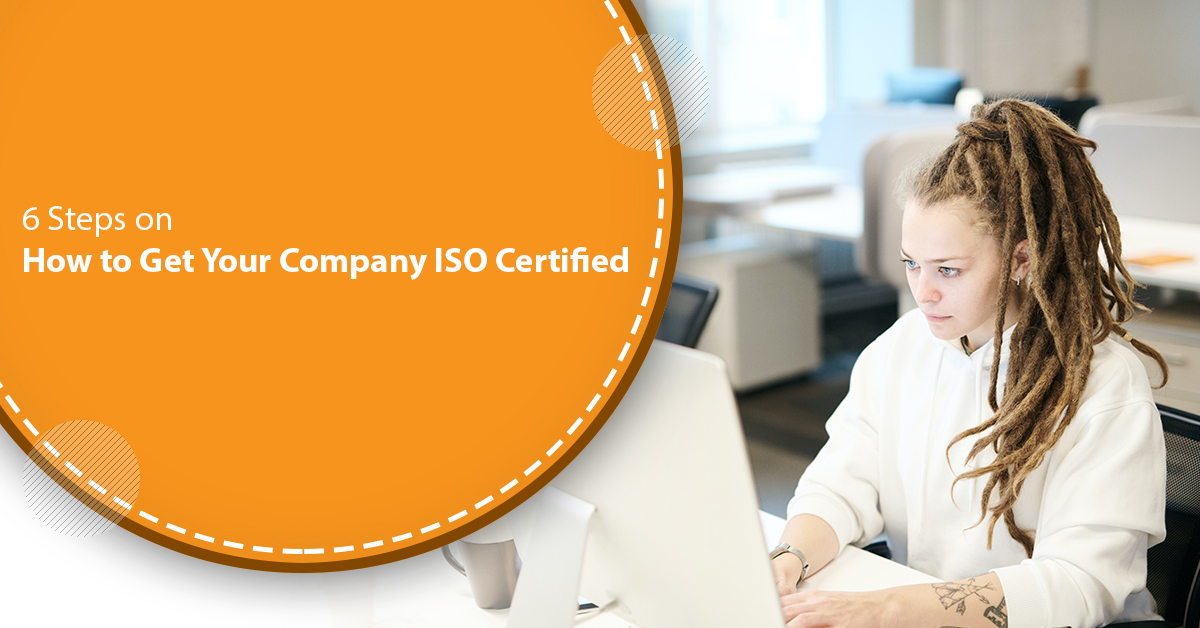6 Steps on How to Get Your Company ISO Certified
Businesses today need to get ISO certified because it is a benchmark of excellence that they receive from an accredited body for showing exemplary commitment in a particular area of management such as quality management, information security, environmental safety or occupational health and safety. There are different ISO management standards, and each addresses a particular aspect of management or governance and has its own set of benefits. Businesses need them not just to adopt the best management systems but also to win the trust of their stakeholders by proving their efficiency and credibility. If you are thinking about getting your organization ISO certified, this blog will be a great guide for you. It explains how a company gets ISO certified considering all the complex requirements and formalities required in the process.
6 Necessary Steps for Your Company to Get ISO Certified
Step 1: Get All Your Resources Ready
To get an ISO management standard, you need to arrange the right resources and get support from the top management of your company. The management team should support the cause i.e., the certification and should commit to providing all the resources required for executing the certification procedure. The management team may even consult a third-party agency to understand what resources are required to meet the obligations of the ISO management standard if they are confused.
Step 2: Pre-Audit or Gap Analysis
Gap analysis is a requisite step that helps you to know your standing against the ISO compliance requirements. This pre-assessment is essential to make sure you know about the gaps in your current management system against the desired ISO management standard. It can be done by internal experts of your company or by auditors of the consultant firm if you have hired them. During the gap analysis, you need to enquire about a few things such as which requirements are not met, how long it would take to meet them, what resources and procedures are involved in meeting them, and what would be the costs required. Therefore, you can prepare accurately to make your management system fully compliant.
Step 3: Develop and Implement the Management System
To get the certification, you should then develop a comprehensive management system by covering all the gaps discovered earlier. This means introducing new processes and controls under the system, providing new responsibilities to the employees, and structuring new policies. Next, to implement the system and make it operational in your company, conduct training sessions for your employees. They must get acquainted with their new roles and are able to smoothly operate all the processes.
Step 4: Do an Internal Audit
Before applying for the certification, you should ensure that the implemented management system fulfills all the requirements of the given standard. That is why an internal audit is crucial. It should be done by some reputed members of your company who have the necessary knowledge and insights into the management system. The third-party consultancy can also assist you in the internal audit procedure if they have qualified auditors specialized in your standard. Whoever conducts the audit, its outcomes or observations are crucial for your certification success.
When a thorough internal audit is performed, you will clearly know about the compliance status of your management. You get to know which requirements of the standard are totally fulfilled, partially fulfilled, and not fulfilled at all. Therefore, based on the audit report, you can take the required measures or corrective actions to address all the noncompliance issues.
Step 5: Choosing an Accredited Certification Body
A well-known accredited body would be responsible for awarding the certification to your company. You need to select a reliable body amongst the lot that provides certifications and apply to them. To select the right one, check their experience, testimonials and whether they suit your business. That external body would perform an on-site audit. They would assess all through the management system to ensure all ISO requirements are met. They would even share their opinions regarding any inadequacies they noticed in the system which need to be addressed.
Step 6: Certification
The last step is when your company receives the ISO certification from the body after they are persuaded that your management system is compliant and efficient enough. The certification will be valid for a certain period i.e., 3 years. After that, you need to renew it. This also means you should conduct periodic internal audits of your management system for maintaining its ISO compliance in the long run.
Key Takeaway
Obtaining the certification of an ISO standard is not the end step for a business. It is the start of another procedure which focuses on the continual improvement of your processes, performance, services or products. For that, you need to work to review, update and fine-tune the management system at regular intervals. It would also make you confident as the time of re-certification audit arrives and would ensure that your company gets easily recertified.
While we have explained here how a company can get ISO certified, you can also contact our team of ISO consultants to get direct guidance regarding each of the steps. We are operating as one of the leading ISO consultancies for more than a decade and have assisted hundreds of companies to get certified seamlessly and cost-effectively.

